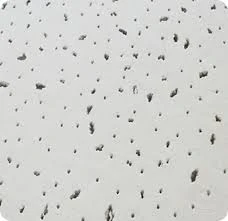10 月 . 15, 2024 17:01 Back to list
PVC Laminated Gypsum Ceiling Panels for Enhanced Aesthetics and Durability
Understanding PVC Laminated Gypsum Ceiling Boards
In the construction and interior design sectors, the choice of materials significantly affects the aesthetic, functionality, and durability of the finished spaces. One such innovative product that has gained popularity is the PVC laminated gypsum ceiling board. This article explores its composition, advantages, applications, and installation techniques, providing a comprehensive understanding of this modern material.
What is PVC Laminated Gypsum Ceiling Board?
PVC laminated gypsum ceiling boards are composed of a gypsum core covered with a layer of polyvinyl chloride (PVC) laminate. Gypsum, a naturally occurring mineral, is known for its fire-resistant properties, sound insulation, and ease of installation. The addition of PVC enhances the board’s surface, providing a smooth finish that is not only visually appealing but also functional.
The laminated surface comes in various colors and designs, offering flexibility in aesthetic choices. This adaptability makes PVC laminated gypsum ceiling boards suitable for both residential and commercial applications.
Advantages of PVC Laminated Gypsum Ceiling Boards
1. Durability One of the standout features of PVC laminated gypsum ceiling boards is their durability. The PVC layer protects the gypsum from moisture, dust, and stains, making it suitable for high-traffic areas and environments prone to humidity.
2. Fire Resistance Gypsum is inherently fire-resistant, which enhances the safety of buildings. In case of fire, these boards do not contribute to flame spread, providing critical time for evacuation.
3. Aesthetic Appeal With a wide range of colors and designs available, these ceiling boards can enhance the aesthetic value of any space. They can mimic the appearance of traditional materials like wood or tiles, providing a luxurious look without the associated costs or maintenance.
4. Easy Maintenance The PVC surface is easy to clean and maintain. A simple wipe with a damp cloth can remove dust and stains, making it a practical choice for busy environments.
5. Sound Insulation The gypsum core provides excellent sound insulation, making these boards suitable for spaces where acoustics are a concern, such as offices, conference rooms, and homes.
6. Lightweight Compared to traditional ceiling materials, PVC laminated gypsum boards are lightweight, which makes handling and installation easier and reduces the load on the building structure.
Applications of PVC Laminated Gypsum Ceiling Boards
pvc laminated gypsum ceiling board

PVC laminated gypsum ceiling boards find extensive applications in both residential and commercial settings
. They are commonly used in- Residential Spaces In homes, these boards can be utilized in living rooms, bedrooms, and kitchens, providing elegance and functionality. Designers often use them to create modern and stylish interiors.
- Commercial Buildings Offices, shopping malls, schools, and hospitals frequently employ these ceiling boards due to their durability, fire resistance, and aesthetic versatility. They can be specially designed to meet the branding and functional needs of various establishments.
- Public Spaces Airports, stations, and other transit areas also benefit from the sound insulation properties and easy maintenance, creating a more comfortable environment for passengers and staff.
Installation of PVC Laminated Gypsum Ceiling Boards
Installing PVC laminated gypsum ceiling boards requires precision and expertise. The process generally involves the following steps
1. Planning and Measurement Accurate measurement of the ceiling area is crucial to determine the number of boards required and to plan the layout.
2. Framework Construction A metal or wooden framework is typically installed to support the ceiling boards. This framework should be leveled to ensure a uniform surface.
3. Cutting and Fitting The ceiling boards are cut according to the dimensions of the framework. Proper fitting is essential to avoid gaps, which can affect both the aesthetic and functionality.
4. Fixation The boards are then fixed into place, usually using screws or adhesive, depending on the framework and specific project requirements.
5. Finishing Touches After installation, any joints are typically sealed and finished to achieve a seamless appearance.
Conclusion
PVC laminated gypsum ceiling boards present a robust and aesthetically pleasing option for modern construction and design. Their combination of durability, ease of maintenance, and fire resistance makes them an ideal choice for a wide variety of applications. As the demand for versatile and functional materials continues to grow, understanding products like PVC laminated gypsum ceiling boards can provide significant advantages in achieving desired aesthetic and practical outcomes in any building project.
-
Revolutionizing Interior Design with Ceilings t grid Suspended SystemNewsOct.29,2024
-
Revolutionizing Ceiling Design with ceiling access panel with Gypsum Tile WaterproofNewsOct.29,2024
-
Revolutionizing Interior Design with PVC Gypsum Ceiling: A Comprehensive GuideNewsOct.29,2024
-
Elevating Interior Design with High quality Mineral Fiber Ceiling TilesNewsOct.29,2024
-
Revolutionizing Interior Design with PVC Gypsum Ceiling: A Comprehensive GuideNewsOct.29,2024
-
Elevating Interior Design with High-Quality Mineral Fiber Ceiling Tiles: A Comprehensive GuideNewsOct.29,2024







